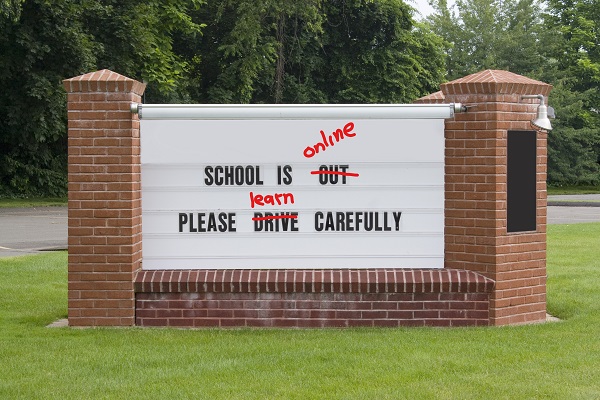It’s the best of times and the worst of times. No, it’s the worst of times, at least in the coronavirus-jolted education world. I started shaping this article in my mind immediately after receiving word that my ed-tech presentation at South by Southwest—and in fact, the entire SXSW family of conferences—was being hurriedly cancelled (just three days’ notice for me) with a concussive effect on more than 400,000 attendees.


Simultaneously, the University of Colorado System (where I work) began the process of shutting down campus classes, events and even commencement ceremonies in confronting the COVID-19 crisis. That was followed by the governor of Colorado closing all schools in the state, shuttering their doors, cancelling proms, and halting school sporting events, as officials shifted all students into an early and elongated spring break. Forty five of fifty states in the U.S. have closed their schools in face of the Covid-19 scourge. I knew the same thing was happening throughout Europe, in such beautiful places as Italy, Spain, and Ireland to name a few.
Schools also seemed to be in panic planning mode across the board. At the university level, all classes at our university system were ordered to move fully online with all courses with impatiently short notice. In many public and private schools, staff began checking out Chromebooks and other devices to individual students with the same intent: to deliver instruction in an online format. I stay connected with an active education forum in Ireland, and I observed the same crescendoing drumbeat there, inching from initial worry and chatter to furious and concentrated planning on how to deliver instruction online.
Across nations I hear echoes of similar concerns: how to deliver instruction online to the littles (the youngest primary children), what tools to use, and how to handle equitable access to devices and bandwidth. In the U.S., schools are initiating or instantiating plans to send out take-home learning packets (print), email lessons to students and parents, rely on their district learning management systems (e.g., Canvas, Schoology), and/or set up video conferencing systems for live instruction. Planning everywhere has been tumultuous and sometimes chaotic, but is now settling into the practical and the doable. For example, teachers in Ireland are communicating with each other for ideas and appropriate tools.
The following word cloud (the larger the word, the more frequently it is mentioned by survey participants) from Ireland shows the thinking of educators about which tools will help them get the job done:
Simultaneous with all this oversized tumult, many educational ‘experts’ now announce the coming of the online learning Messiah. Proponents of distance learning shout from every corner, “we are the answer.” “We will revolutionize schooling”, they collectively declare. And some of that exuberance makes sense. Schools that have mature technology systems in place (e.g., learning management systems, multiple deployable devices, high levels of teacher comfort with technology and blended learning instruction) seem to be much more “ready to roll” than others. At the same time, many display manufacturers are readying, now or later, for the massive uptick in demand for their products that will be driven by demand for more devices (and expected device replacement) in schools.
I have no doubt that the centrality of technology for use in continuity of learning challenges will see boosted value and product demand in the near future. Certainly, teachers in the future need more technology—and need to get better using it—but I continue to hear from K12 and higher ed instructors alike that the steadfast value of face-to-face connection, personal relationships, and active hands-on learning is something they NEVER want to sacrifice. Modern distance learning tools offer a timely safety-valve for our threatened educational institutions, but don’t expect a revolution. So what will happen? After this mess, we may see a true janus condition evolve: both a stronger demand for technology AND a greater appreciation for face-to-face learning. – Len Scrogan

